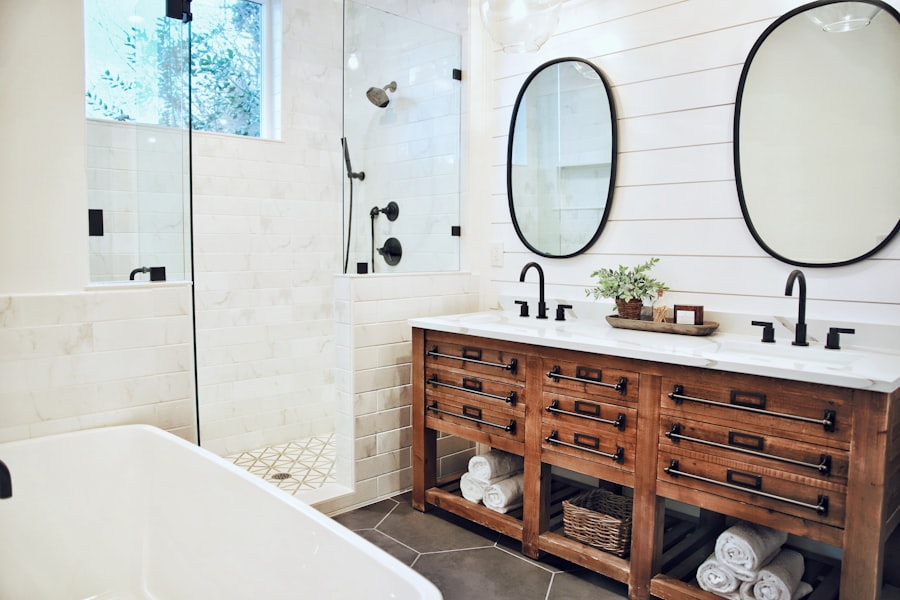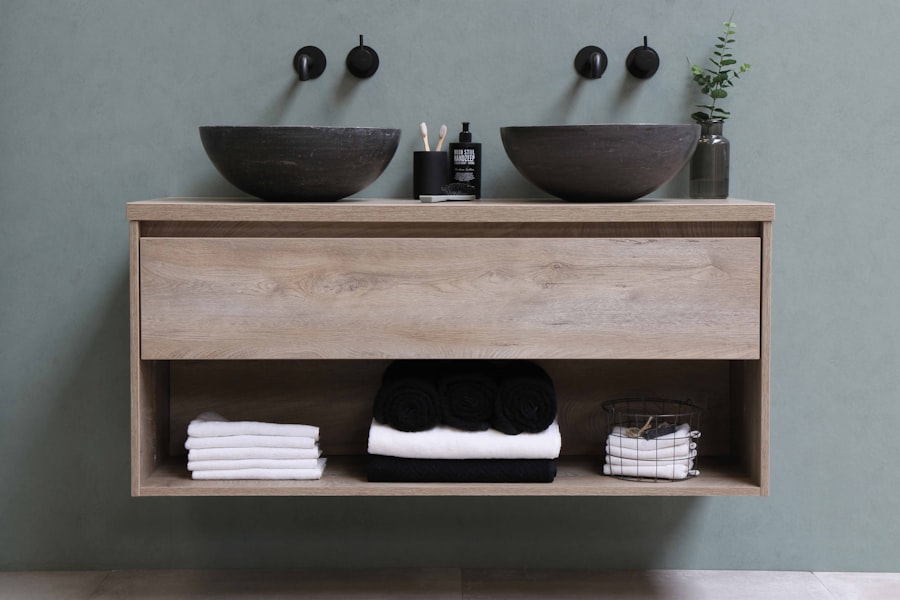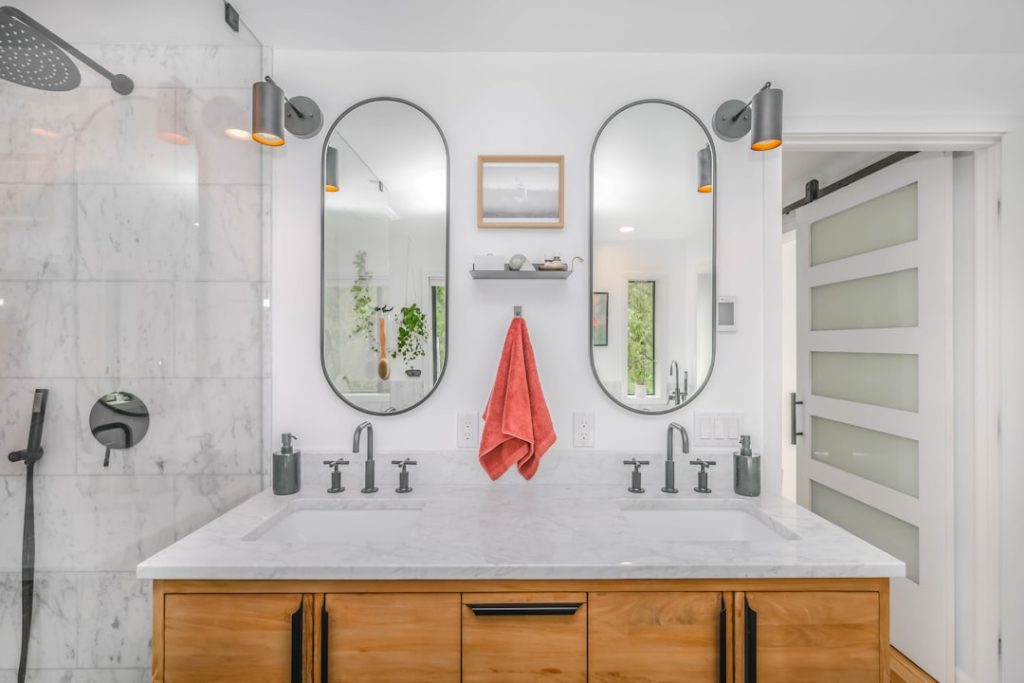When embarking on the journey to create a custom vanity, the first step is to thoroughly understand your personal needs and aesthetic preferences. This involves a deep dive into your daily routines and how a vanity can enhance your experience. Consider the functionality you require: Do you need ample storage for cosmetics and toiletries?
Is a spacious countertop essential for your morning rituals? Perhaps you envision a dual-sink setup for shared spaces. By identifying these practical needs, you can begin to shape the design of your custom vanity to suit your lifestyle.
Equally important is the stylistic aspect of your vanity. Your home’s overall decor should guide your choices, ensuring that the new piece harmonizes with existing elements. Are you drawn to modern minimalism, rustic charm, or perhaps a classic, ornate style?
Look for inspiration in design magazines, online platforms like Pinterest, or even in the homes of friends and family. By gathering images and ideas that resonate with you, you can create a mood board that encapsulates your vision. This will not only clarify your preferences but also serve as a valuable reference when discussing your project with designers or craftsmen.
Key Takeaways
- Identify your personal style and functional needs before starting the custom vanity process.
- Research and shortlist local custom vanity makers to find reliable and skilled craftsmen.
- Set a clear budget to guide your design choices and material selections.
- Explore different materials, finishes, and design options to create a vanity that fits your space and taste.
- Visit showrooms, get multiple quotes, and compare options thoroughly before making your final purchase decision.
Researching Local Custom Vanity Makers
Once you have a clear understanding of your needs and style, the next step is to research local custom vanity makers. This process involves exploring various artisans and companies that specialize in bespoke furniture. Start by seeking recommendations from friends, family, or local home improvement stores.
Online reviews and ratings can also provide insight into the quality of work and customer service offered by different makers. As you compile a list of potential candidates, take the time to investigate their portfolios. A reputable custom vanity maker will have a diverse range of completed projects that showcase their craftsmanship and design capabilities.
Pay attention to the details in their work—joinery, finish quality, and overall aesthetics are crucial indicators of their skill level. Additionally, consider visiting their websites or social media pages to see if they share testimonials from satisfied clients. This research phase is vital in ensuring that you select a maker whose style aligns with your vision and whose reputation reflects reliability and excellence.
Budgeting for Your Custom Vanity

Budgeting for a custom vanity is a critical step that requires careful consideration of various factors. The cost of a custom piece can vary significantly based on size, materials, complexity of design, and the reputation of the maker. Begin by establishing a realistic budget that reflects what you are willing to invest in this piece of furniture.
It’s essential to account for not just the vanity itself but also any additional costs such as plumbing modifications, countertop materials, and installation fees. To create a comprehensive budget, research the average costs associated with custom vanities in your area. This may involve reaching out to multiple makers for preliminary quotes or exploring online resources that provide pricing benchmarks.
Keep in mind that while it may be tempting to opt for the lowest bid, quality should not be compromised for cost savings. Investing in a well-crafted vanity can enhance your space and provide long-term satisfaction. Additionally, consider setting aside a contingency fund—typically around 10-15% of your total budget—to accommodate any unexpected expenses that may arise during the project.
Designing Your Custom Vanity
| Metric | Description | Typical Range | Considerations |
|---|---|---|---|
| Vanity Width | The horizontal measurement of the vanity | 24″ – 72″ | Depends on bathroom size and storage needs |
| Vanity Height | Distance from floor to countertop | 30″ – 36″ | Ergonomics and user comfort |
| Vanity Depth | Distance from front to back of vanity | 18″ – 24″ | Space availability and sink type |
| Sink Type | Type of sink integrated into vanity | Undermount, Vessel, Drop-in | Affects countertop material and height |
| Countertop Material | Surface material of vanity top | Quartz, Granite, Marble, Laminate | Durability, maintenance, and style |
| Storage Options | Types of storage included | Drawers, Cabinets, Open Shelves | Organization and accessibility |
| Lighting Integration | Built-in lighting features | LED strips, Vanity lights, Backlit mirrors | Enhances functionality and ambiance |
| Plumbing Configuration | Placement and type of plumbing fixtures | Single hole, Centerset, Widespread | Compatibility with sink and faucet |
With a budget in place, you can now focus on the design of your custom vanity. This stage is where creativity meets functionality, allowing you to tailor every aspect of the piece to your specifications. Start by sketching out your ideas or using design software to visualize the layout.
Consider dimensions carefully; ensure that the vanity fits comfortably within your space while providing adequate storage and surface area. Incorporate elements that reflect your personal style while also considering practical features. For instance, if you have a penchant for organization, think about including drawers with dividers or pull-out shelves for easy access to items.
Lighting is another crucial aspect; integrated LED lights or strategically placed sconces can enhance both functionality and ambiance. Collaborating with your chosen maker during this phase can yield valuable insights; they may suggest design tweaks or features that enhance usability while staying true to your vision.
Considering Materials and Finishes
The choice of materials and finishes plays a pivotal role in both the aesthetics and durability of your custom vanity. When selecting materials, consider not only their visual appeal but also their practicality in a bathroom environment where moisture is prevalent. Common materials for vanities include solid wood, plywood, and engineered materials like MDF or particleboard.
Solid wood offers timeless beauty and durability but may require more maintenance than engineered options. Finishes are equally important; they can dramatically alter the look and feel of your vanity. A high-gloss finish can lend a modern touch, while a matte finish may evoke a more rustic or vintage vibe.
Additionally, consider how different finishes will interact with other elements in your bathroom, such as tile or fixtures. If you’re unsure about which materials and finishes will work best together, consult with your custom vanity maker—they often have extensive experience in selecting combinations that achieve both beauty and functionality.
Visiting Showrooms and Workshops

Visiting showrooms and workshops is an invaluable step in the process of creating your custom vanity. This hands-on experience allows you to see materials up close, feel textures, and examine craftsmanship firsthand. Many custom makers have showrooms where they display their work; this is an excellent opportunity to assess their quality and design range.
Pay attention to details such as joinery techniques, finish quality, and overall construction—these factors will influence both the longevity and appearance of your vanity. In addition to showrooms, consider visiting workshops if possible. Observing artisans at work can provide insight into their processes and techniques, helping you gauge their expertise.
Engaging in conversations with craftsmen can also spark new ideas for your design; they may offer suggestions based on their experience that could enhance functionality or aesthetics. Furthermore, seeing the workshop environment can give you confidence in their capabilities—an organized and well-equipped space often reflects professionalism and dedication to quality.
Getting Quotes and Comparing Options
Once you have narrowed down your list of potential custom vanity makers, it’s time to request quotes and compare options. When reaching out for quotes, provide detailed information about your design preferences, dimensions, materials, and any specific features you desire. This will enable makers to give you accurate estimates tailored to your project.
As you receive quotes, take note of what each includes—some may cover installation while others might charge separately for this service. Additionally, consider the timeline each maker provides; understanding how long it will take to complete your vanity is crucial for planning purposes. When comparing options, don’t just focus on price; evaluate the overall value each maker offers based on quality, craftsmanship, customer service, and warranty policies.
This comprehensive approach will help ensure that you make an informed decision that aligns with both your budget and expectations.
Making the Final Decision and Placing Your Order
After careful consideration of all factors—design preferences, materials, quotes, and timelines—it’s time to make your final decision and place your order for your custom vanity. This moment marks the culmination of extensive planning and research; it’s essential to feel confident in your choice before moving forward. Revisit your initial goals and ensure that the selected maker aligns with your vision while offering quality craftsmanship.
Before finalizing the order, clarify all details with the maker—confirm dimensions, materials, finishes, and any additional features discussed during the design process. It’s also wise to review payment terms and timelines once more to avoid any misunderstandings later on. Once everything is agreed upon, placing your order will set the project in motion; from this point forward, you’ll be one step closer to enjoying a beautifully crafted custom vanity that enhances both the functionality and aesthetic appeal of your space.



